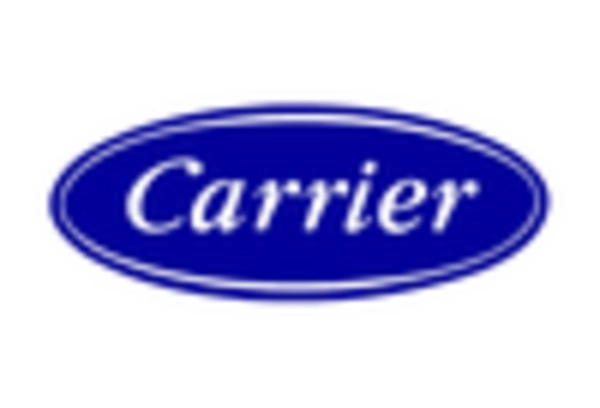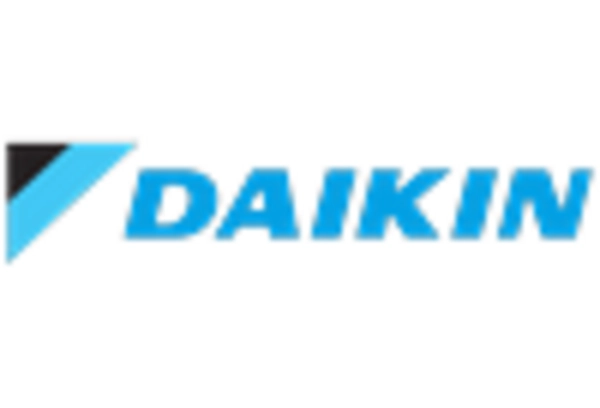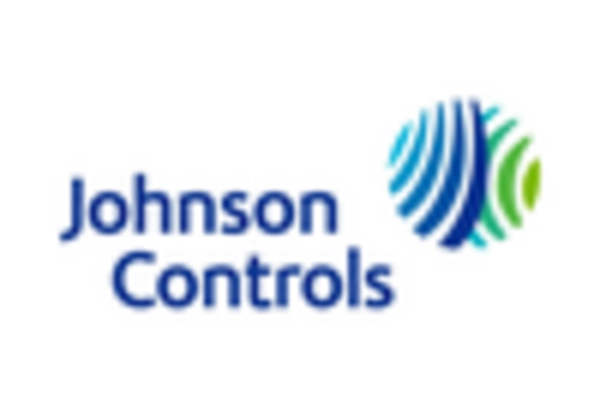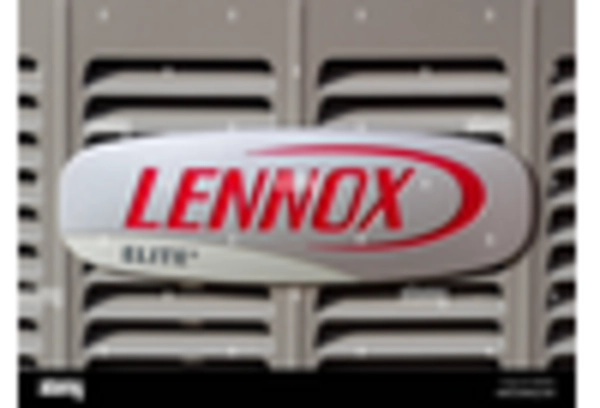Rising Construction Activities
The air handling-units market experiences a notable boost due to the increasing construction activities across the GCC region. With a projected growth rate of approximately 5.5% annually, the demand for air handling units is expected to rise significantly. This surge is primarily driven by the expansion of commercial and residential buildings, as well as infrastructure projects. The construction sector's growth necessitates advanced HVAC systems, including air handling units, to ensure optimal indoor air quality and energy efficiency. As urbanization continues to escalate, the air handling-units market is poised to benefit from the heightened need for effective climate control solutions in newly constructed facilities.
Regulatory Compliance and Standards
The air handling-units market is influenced by stringent regulatory compliance and standards set by governmental bodies in the GCC. These regulations often mandate the use of energy-efficient systems to reduce environmental impact. For instance, the implementation of energy efficiency standards can lead to a potential market growth of around 7% as companies strive to meet these requirements. Compliance not only enhances the operational efficiency of air handling units but also promotes sustainability within the industry. As regulations evolve, the air handling-units market must adapt, driving innovation and the adoption of advanced technologies to meet compliance demands.
Increased Focus on Indoor Air Quality
The growing awareness regarding indoor air quality (IAQ) significantly impacts the air handling-units market. As health concerns rise, particularly in urban areas, there is a heightened demand for systems that can effectively filter and circulate air. The air handling-units market is likely to see a growth of approximately 6% as consumers and businesses prioritize IAQ. Enhanced filtration systems and advanced air handling technologies are becoming essential in both residential and commercial settings. This trend indicates a shift towards more sophisticated air handling solutions that not only provide temperature control but also ensure cleaner, healthier indoor environments.
Technological Advancements in HVAC Systems
Technological advancements play a crucial role in shaping the air handling-units market. Innovations such as variable air volume systems and advanced control mechanisms are enhancing the efficiency and performance of air handling units. The market is expected to grow by around 5% as these technologies become more prevalent. Enhanced automation and smart controls allow for better energy management and operational efficiency. As the demand for sophisticated HVAC solutions increases, the air handling-units market must continue to evolve, integrating cutting-edge technologies to meet the expectations of modern consumers and businesses.
Sustainability Initiatives and Green Building Practices
Sustainability initiatives are increasingly influencing the air handling-units market, particularly in the context of green building practices. The GCC region is witnessing a shift towards environmentally friendly construction, which often incorporates energy-efficient air handling units. This trend is projected to drive market growth by approximately 8% as more developers seek to achieve sustainability certifications. The air handling-units market is adapting to these demands by offering products that align with green building standards, thereby enhancing their appeal to environmentally conscious consumers. This focus on sustainability not only benefits the environment but also positions the industry favorably in a competitive market.

















Leave a Comment